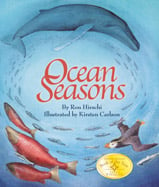Alignment to Standards for VA

| Grade | Number | Standard |
|---|---|---|
| 1 | SC-1.5b | animal characteristics:body coverings, body shape, appendages, and methods of movement) |
| 1 | SC-1.5c | animal characteristics. Key concepts include other characteristics (wild/tame, water homes/land homes). |
| 1 | SC-1.7a | Seasonal changes: Key concepts include how temperature, light, and precipitation bring about changes in plants (growth, budding, falling leaves, and wilting); |
| 1 | SC-1.7b | Seasonal changes: Key concepts include how temperature, light, and precipitation bring about changes in animals (behaviors, hibernation, migration, body covering, and habitat); and |
| 1 | SC-1.7c | Seasonal changes: Key concepts include how temperature, light, and precipitation bring about changes in people (dress, recreation, and work). |
| 1 | SC-1.8a | natural resources Key concepts include identification of natural resources (plants and animals, water, air, land, minerals, forests, and soil); |
| 1 | SC-1.8b | natural resources Key concepts include factors that affect air and water quality |
| 2 | EC-2.7 | The student will describe the differences between natural resources (water, soil, wood, and coal), human resources (people at work), and capital resources (machines, tools, and buildings). |
| 2 | GEO-2.4c | comparing the climate, land, and plant life of these regions; |
| 2 | SC-2.4a | plant and animal life cycles. Key concepts include some animals (frogs and butterflies) undergo distinct stages during their lives, while others generally resemble their parents; and |
| 2 | SC-2.5a | living things are part of a system. Key concepts include living organisms are interdependent with their living and nonliving surroundings; and |
| 2 | SC-2.5b | living things are part of a system. Key concepts include habitats change over time due to many influences. |
| 2 | SC-2.7a | Seasonal changes: Key concepts include effects on growth and behavior of living things (migration, hibernation, camouflage, adaptation, dormancy); and |
| 2 | SC-2.8a | Plants importance Key concepts include important plant products (fiber, cotton, oil, spices, lumber, rubber, medicines, and paper); |
| 2 | SC-2.8b | Plants importance Key concepts include the availability of plant products affects the development of a geographic area; and |
| 2 | SC-2.8c | Plants importance Key concepts include plants provide homes and food for many animals and prevent soil from washing away. |
| 3 | EC-3.7 | The student will explain how producers use natural resources (water, soil, wood, and coal), human resources (people at work), and capital resources (machines, tools, and buildings) to produce goods and services for consumers. |
| 3 | SC-3.10a | Key concepts include the interdependency of plants and animals; |
| 3 | SC-3.11c | sources of energy. Key concepts include fossil fuels (coal, oil, natural gas) and wood; and |
| 3 | SC-3.11d | sources of energy. Key concepts include renewable and nonrenewable energy resources. |
| 3 | SC-3.4a | animal adaptations: methods of gathering and storing food, finding shelter, defending themselves, and rearing young; |
| 3 | SC-3.4b | animal adaptations: hibernation, migration, camouflage, mimicry, instinct, and learned behavior. |
| 3 | SC-3.5a | food chains. Key concepts include producer, consumer, decomposer; |
| 3 | SC-3.5b | food chains. Key concepts include herbivore, carnivore, omnivore |
| 3 | SC-3.5c | food chains. Key concepts include predator and prey. |
| 3 | SC-3.6a | environments Key concepts include water-related environments (pond, marshland, swamp, stream, river, and ocean environments); |
| 3 | SC-3.6c | environments Key concepts include population and community. |
| 3 | SC-3.8a | Key concepts include patterns of natural events (day and night, seasonal changes, phases of the moon, and tides); and |
| 3 | SC-3.8b | Key concepts include animal and plant life cycles. |
| 4 | SC-4.5a | plants and animals in an ecosystem Key concepts include behavioral and structural adaptations; |
| 4 | SC-4.5b | plants and animals in an ecosystem Key concepts include organization of communities; |
| 4 | SC-4.5c | Key concepts includeflow of energy through food webs; |
| 4 | SC-4.5d | Key concepts include habitats and niches; |
| 4 | SC-4.5e | Key concepts include life cycles |
| 4 | SC-4.8a | Virginia natural resources. Key concepts includewatershed and water resources; |
| 5 | SC-5.6a | ocean environment. Key concepts include geological characteristics (continental shelf, slope, rise); |
| 5 | SC-5.6b | ocean environment. Key concepts include physical characteristics (depth, salinity, major currents); and |
| 5 | SC-5.6c | ocean environment. Key concepts include biological characteristics (ecosystems). |
| K | GEO-K.4b | locate land and water features. |
| K | SC-K.5b | Key concepts include the natural flow of water is downhill; |
| K | SC-K.6b | basic needs plants and animals. Key concepts include plants and animals live and die (go through a life cycle); and |
| K | SC-K.6c | Key concepts include offspring of plants and animals are similar but not identical to their parents and to one another. |
| K | SC-K.8a | simple patterns in daily life. Key concepts include weather observations; |
| K | SC-K.8c | simple patterns in daily life. Key concepts include animal and plant growth |
| K | SC-K.9a | change over time Key concepts include natural and human-made things may change over time |
| K | SC-K.9b | change over time Key concepts include changes can be noted and measured. |